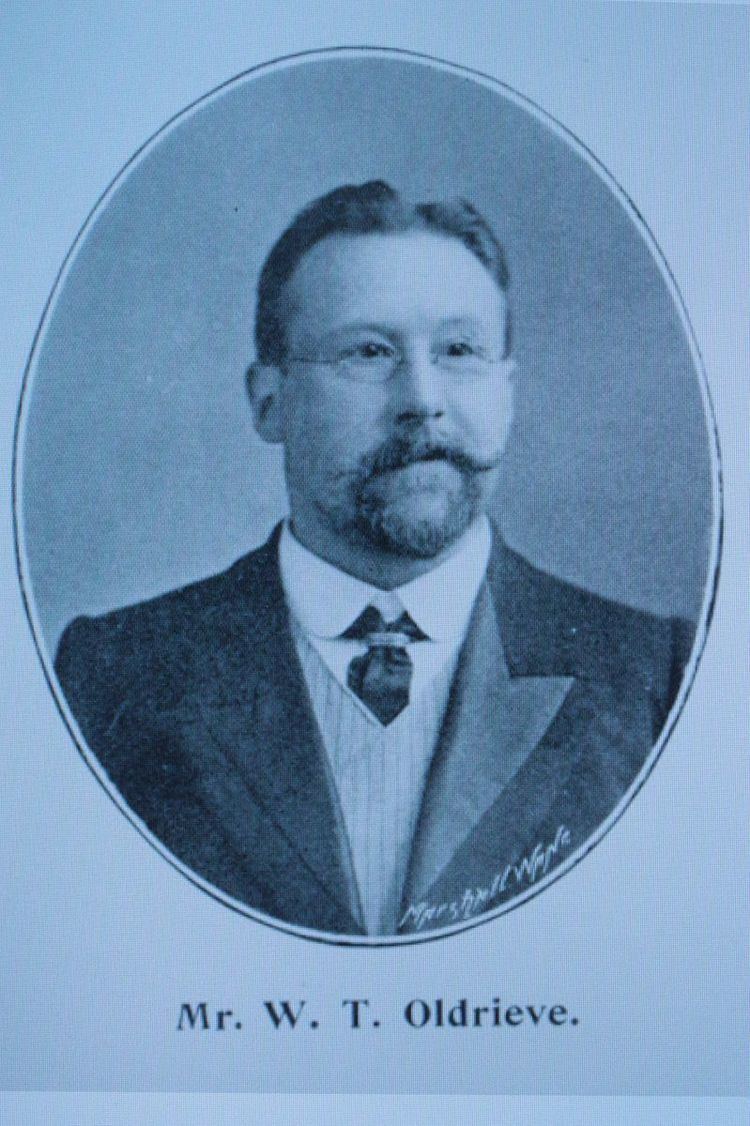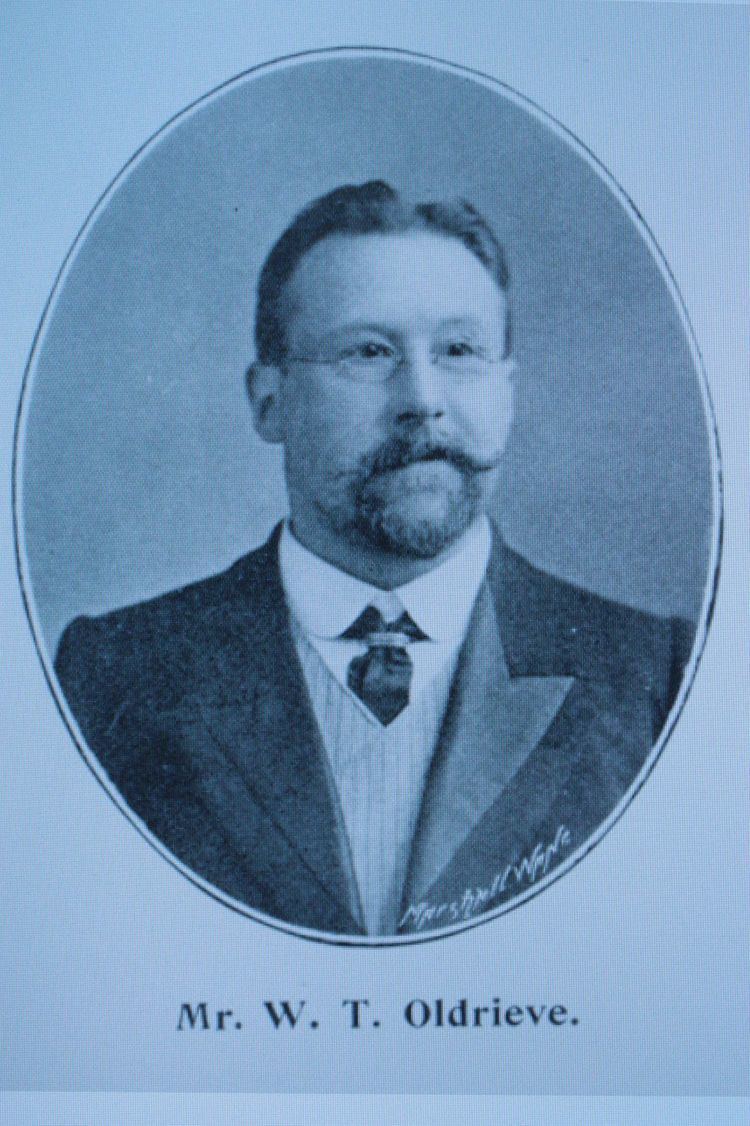Name William Oldrieve | ||
 | ||
William Thomas Oldrieve (15 December 1853 – 12 January 1922) was an English architect and scholar primarily associated with public buildings in his role as Architect for Scotland within the Office of Works. His predominant style would be termed "Edwardian Classic".
Contents

Life
Oldrieve was from a deeply religious Baptist family. He was born in Totnes, Devon the son of William Oldrieve, Clerk of Works and Elizabeth Tyler.
He was educated at Mansfield Grammar School in Nottinghamshire then served an apprenticeship (1868–71) with his father at Thoresby Hall in Budby, Nottinghamshire, under Anthony Slavin. He then moved to the engineering offices of William Cubitt & Co (1871-3) working under Joseph Cubitt. From there he obtained a post in the War Office attached in a design role to the Royal Engineers, and establishing a lifelong link as an architect/engineer in a civil service capacity.
He remained attached to the Royal Engineers until 1881, during which time he was posted to Edinburgh Castle, a building with which he continued a permanent interest alongside his given role of maintaining its fabric. Soon after he began a deeper interest in design and began to study architecture under Professor Baldwin Brown. He was a gifted student and won several prizes including a travelling scholarship to Europe where he took a particular interest in Post Office design, a field in which he chose to specialise. He was impressed by designs he found in Berlin, Hamburg, Vienna and Paris.
On his return he was appointed Architect for Provincial Post Offices in England and Wales. This role gave a great deal of freedom as to whether these buildings should be functional or done with flair. Oldrieve chose the latter.
In 1904 he was appointed Principal Architect for Scotland, an extremely prestigious role. Oddly this predated his actual acceptance into the professional body, the RIBA, by two years. His role brought him closer to the duty of protecting Ancient Monuments in Britain and his research work deepened, resulting in a paper in 1908 on The Royal Palaces of Scotland, and papers on the archaeological investigations then ongoing at Holyrood Abbey in Edinburgh.
He retired from public work in 1914 but continued in a consultative role in a newly formed partnership entitled Oldrieve Bell & Paterson. This was with William Wilson Paterson a former Office of Works colleague, and Andrew W Bell the former Dunfermline Burgh Engineer.
In 1917, with the First World War ongoing, he was appointed Secretary for the Ministry of Munitions. He was at the same time undergoing a major study, the National Art Survey for Scotland, with the aid of Robert Rowand Anderson and Thomas Ross.
On his Christian side he also played a major role. In Edinburgh he was an elder of the Morningside Baptist Church, President of the Baptist Union (1915), President of Carrubbers Close Mission, and a director of the National Bible Society for Scotland.
He died of stomach cancer on 12 January 1922.
His son, Frank Oldrieve, trained as a minister and became Secretary of the Leper Mission in India.
